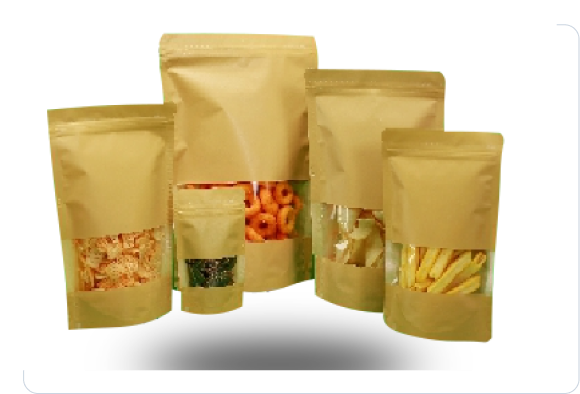The use of packaging worldwide leads to the consumption of 5% of the world's energy supply and produces 3% of greenhouse gas emissions. Business operations and consumer markets actively pursue sustainable solutions because the world faces worsening climate change effects. Flexible packaging provides lightweight versatility and eco-friendly properties, which constitute an industrial revolution. The following blog investigates how flexible packaging lowers carbon emissions, together with its environmental advantages as well as its transformative power for sustainability.
What is Flexible Packaging?

Flexible packaging consists of pouches and bags together with wraps which enable them to conform to product shapes. The weight advantages of flexible packaging surpass those of rigid packaging such as glass, metal or plastic bottles, because it offers durability while requiring reduced resources for production.
Which elements lead to flexible packaging to provide better environmental benefits?
- It requires 5 to 10 times fewer raw materials when compared to conventional rigid solutions.
- Its adaptability extends to multiple product categories which include both food items as well as pharmaceuticals.
- The light structure of flexible packaging lowers shipment expenses as well as decreases environmental emissions.
How Flexible Packaging Reduces Carbon Footprint?
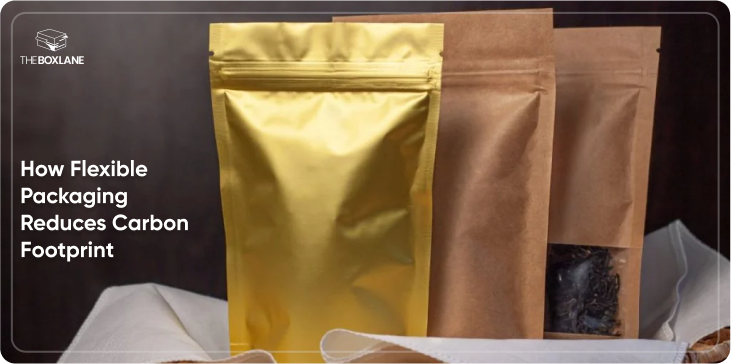
The ability of flexible packaging to lower carbon emissions places it at the top of environmental sustainability. Here’s how:
Material Efficiency
The amount of materials required for flexible packaging remains significantly lower than what rigid packaging requires. A packaging volume of the same size requires only 33.4 times less material than conventional packaging methods. The decreased need for raw materials leads to lower waste production.
Transportation Savings
Lightweight flexible packaging needs fewer transportation trucks during its distribution. The packaging method leads to lower fuel costs and produces less carbon emissions. Virtual packaging transportation requires just one truckload to achieve the equivalent volume distribution of rigid packaging that normally needs 26 trucks.
Energy Efficiency
The manufacturing process used for flexible packaging needs less water and energy than the conventional packaging materials do. Flexible packaging proves to be a better environmental choice because of its lightweight design.
Food Waste Reduction
Flexible packaging protects food items by extending their shelf life by blocking moisture entry, along with air and contaminants. The practice helps decrease the amount of wasted food because it is a major source of greenhouse gas emissions.
Innovations in Flexible Packaging
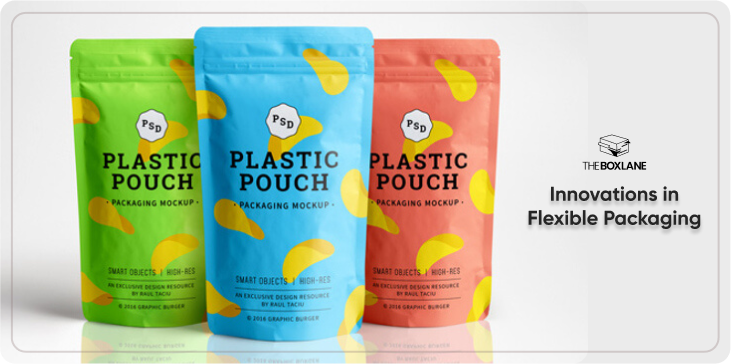
The packaging industry moves forward each day with flexible packaging occupying the key position in developing sustainable innovations. Several new trends have emerged in the market, including the following:
Compostable and Biodegradable Materials
The packaging industry now uses compostable solutions based on plant materials that include cornstarch and sugarcane. These natural products degrade without any negative impact on the environment.
Mono-Material Designs
Traditional flexible packaging contains various materials that create difficulties when recycling it. The main advantage of achieving a circular economy through packaging is the adoption of single material solutions, which simplify recycling processes.
Resealable and Anti-Fog Technologies
The functional performance of flexible packaging increases because resealable zippers and anti-fog films introduce new capabilities that improve sustainability and offer better customer experiences.
Challenges and Solutions
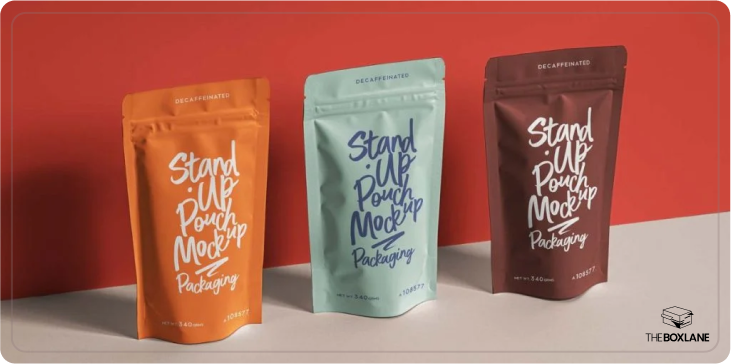
The benefits of flexible packaging come with specific difficulties that manufacturers must handle. The industry has implemented various solutions to resolve the existing challenges:
Recycling Challenges
The diverse layer composition of flexible packaging impedes its ability to undergo proper recycling. Progress in sorting and design of mono-material packaging has made recycling operations more efficient.
End-of-Life Disposal
The problem of waste disposal management is being addressed by brand companies through their take-back programs and recycling programs. Consumers can take advantage of these programs which motivate them to bring back packaging materials for recycling purposes.
Consumer Education
People who buy products know little about how flexible packaging can benefit the environment. Brands need to use distinct product labels and promotional campaigns to show their sustainability activities to consumers.
Consumer Education and Brand Communication
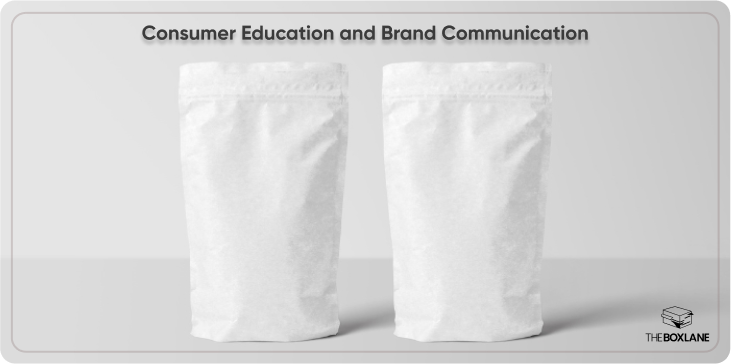
The general acceptance of flexible packaging depends heavily on making customers understand its positive impact on sustainability. Here’s how brands can do it:
Transparency
Brands need to maintain transparency when showing their sustainable targets while presenting data about their packaging environmental effects. The practice of openness persuades buyers to embrace sustainable choices through trust-building measures.
Clear Labeling
The packaging requires clear indicator labels to let consumers understand its sustainability qualities through statements "Compostable" "Recyclable," and "Made from Recycled Materials.".
Engaging Campaigns
The company should start awareness campaigns that demonstrate how flexible packaging reduces carbon emissions. A transition to flexible packaging resulted in the brands conserving X tons of CO2 emissions ,according to promotional materials.
Future Trends in Flexible Packaging
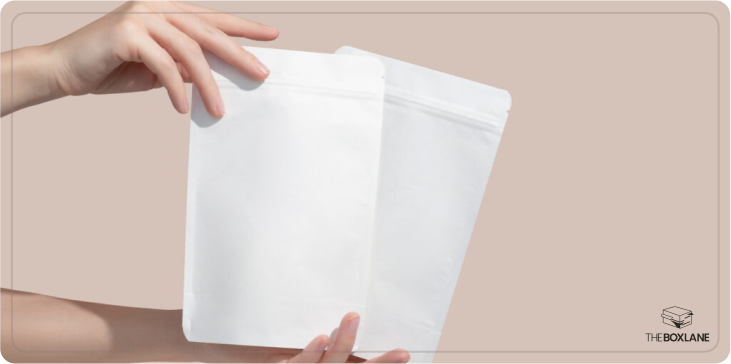
Flexible packaging will experience remarkable growth as multiple promising market trends emerge in the future:
Reusable and Refillable Packaging
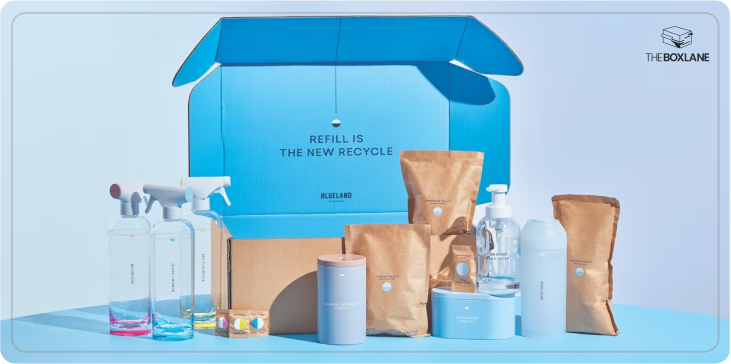
The market introduces reusable packaging systems for refillable containers, which helps customers reduce waste and promotes the circular economy model.
Smart Packaging
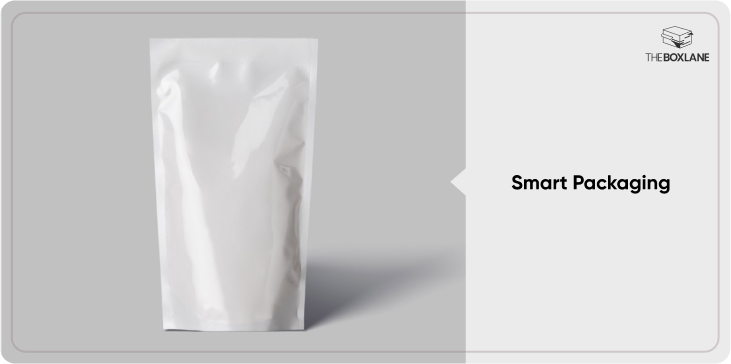
Machine learning and IoT systems are enabling the research of smart containers which both track food freshness and supply instant data entry to customers.
Carbon-Neutral Packaging
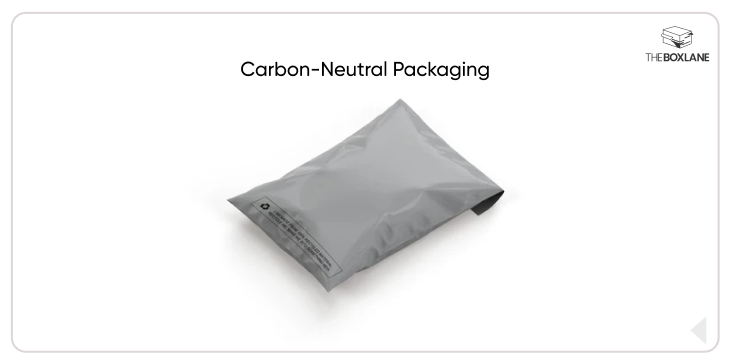
Companies make efforts toward carbon-neutral packaging through emissions offsetting projects that fund renewable energy development, combined with forest reforestation programs.
Conclusion
Flexible packaging is transforming the sustainability game by providing three crucial benefits while reducing material usage along with decreasing transportation costs and minimizing waste during food storage. Brand sustainability through flexible packaging becomes better through the application of innovative solutions while providing educational information to consumers.
Support the movement for sustainable future development through the utilization of green packaging alternatives. By collaborating with The Box Lane, you can decrease your carbon footprint and create a green planet for our future generation.


